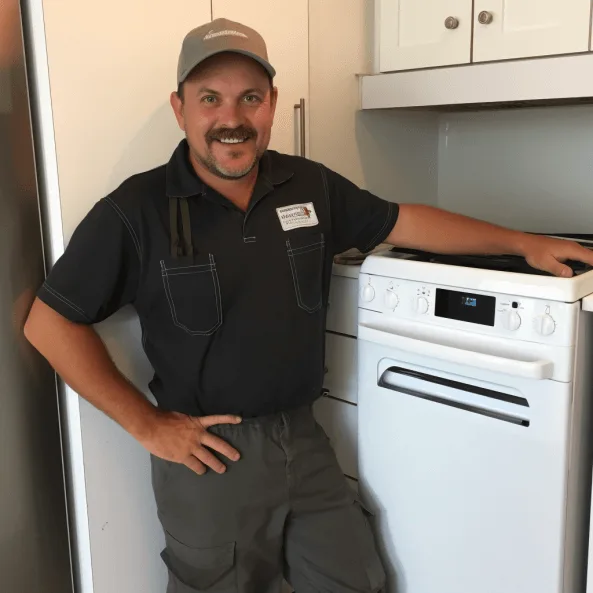Ever wondered how long you should hold a vacuum on your AC system before recharging it? Picture this: it’s a scorching summer day, and your AC is struggling to keep you cool. Could improper vacuuming be the culprit? In this article, we’ll unravel the mystery and guide you through the optimal vacuum-holding duration for your AC system.
Imagine the relief of knowing the exact timeframe needed to ensure your AC system functions at its best. By understanding the ideal vacuum-holding period, you can prevent potential issues and save time and money on unnecessary repairs. Stay with us as we simplify this essential step in AC maintenance and empower you to take control of your cooling comfort.
Get ready to elevate your AC maintenance game and achieve peak performance by mastering the art of vacuuming your system. With our expert guidance, you’ll gain the knowledge and confidence to tackle this crucial task efficiently and effectively. Let’s dive in and uncover the secrets to maximizing your AC’s cooling capabilities.





Understanding the Importance of Vacuuming Your AC System
Maintaining your AC system involves vacuuming it before a recharge. This step is crucial as it removes moisture and air to prevent issues and ensure optimal performance.
Why is vacuuming necessary?
- Removes Moisture: Vacuuming eliminates moisture which can cause corrosion and damage.
- Prevents Contamination: It clears out air and pollutants that can affect the system’s efficiency.
- Ensures Proper Refrigerant Flow: A vacuum allows for proper refrigerant flow for effective cooling.
How long should you hold a vacuum?
- Vacuum larger systems for 45 minutes to 1 hour.
- For smaller systems, 30 minutes is often sufficient.
- Use a quality vacuum pump to ensure a strong vacuum.
- Check for leaks during the process to maintain pressure.
Remember, a well-executed vacuuming process sets the stage for a successful AC system recharge.
Factors Affecting the Vacuuming Duration
When deciding how long to hold a vacuum on your AC system, several factors come into play to ensure an effective and thorough process. Understanding these factors can help you determine the optimal duration for your specific system:
- System Size: Larger AC systems require 45 minutes to 1 hour of vacuuming to eliminate air and moisture effectively.
- System Complexity: Intricate systems with more components may need additional time for the vacuum to reach all parts.
- System Condition: Systems with pre-existing leaks or contamination might need prolonged vacuuming to ensure proper evacuation.
- Environmental Conditions: High humidity or temperature can impact the speed at which the vacuum eliminates moisture from the system.
- Equipment Quality: Using a quality vacuum pump with sufficient capacity is crucial for maintaining the desired level of vacuum.
Considering these factors when determining the vacuuming duration for your AC system will result in a successful and efficient recharge process. Remember, a well-executed vacuuming step lays the foundation for the optimal performance of your AC system.
Optimal Duration for Holding Vacuum on AC System
When it comes to vacuuming your AC system, the duration for holding a vacuum is a crucial step that ensures the success of the recharge process. Here’s a breakdown to guide you on the optimal duration based on different system sizes:





- Small Systems: Holding a vacuum for about 20-30 minutes should suffice for smaller AC systems.
- Medium Systems: For medium-sized systems, aim for a vacuum hold of 30-45 minutes to ensure all air and moisture are properly removed.
- Large Systems: Larger systems require a longer vacuum hold time, ideally around 45 minutes to 1 hour for thorough evacuation.
Remember, the condition of your AC system and environmental factors can also influence the optimal vacuum duration. If you’re working with a complex or compromised system, consider extending the vacuum hold time to ensure a complete evacuation.
Steps to Ensure Proper Vacuuming
When preparing to vacuum your AC system, follow these steps to ensure a thorough evacuation:
- Connect the Vacuum Pump: Attach the vacuum pump to the system using the proper fittings.
- Open Valves: Open both high and low-side valves on the manifold gauge set.
- Turn on the Vacuum Pump: Start the vacuum pump to begin removing air and moisture from the system.
- Monitor Gauges: Keep an eye on the vacuum gauge readings to ensure the system is maintaining a steady vacuum.
- Check for Leaks: Conduct a leak test using a leak detector to ensure there are no leaks in the system.
- Verify Vacuum Hold Stability: Once the vacuum reaches the recommended hold time, verify that the system can maintain the vacuum pressure without dropping significantly.
Remember, following these steps diligently ensures that your AC system is properly evacuated and ready for recharging.
Conclusion
By adhering to the proper vacuuming procedures outlined in this article, you can ensure that your AC system is thoroughly evacuated before recharging. Following the steps of connecting the vacuum pump, monitoring gauge readings, conducting leak tests, and verifying vacuum hold stability is crucial for the optimal performance of your AC system. Remember, taking the time to vacuum your AC system correctly will help prevent future issues and ensure that your system operates efficiently. So, next time you’re working on your AC system, make sure to follow these steps diligently for the best results.
Frequently Asked Questions
What is the importance of proper vacuuming procedures for AC systems?
Proper vacuuming procedures for AC systems are crucial to ensure thorough evacuation of air and moisture. This step is necessary before recharging the system to prevent issues like reduced efficiency, compressor damage, and contamination.





What are the key steps to follow for vacuuming an AC system?
The key steps for vacuuming an AC system include connecting the vacuum pump, opening the valves, monitoring gauge readings to ensure the correct vacuum level is achieved, conducting leak tests to check for any issues, and verifying vacuum hold stability.
Why is it important to monitor gauge readings during the vacuuming process?
Monitoring gauge readings is essential during vacuuming to ensure that the vacuum level reaches the required specifications. This step helps in confirming that air and moisture are effectively removed from the system before proceeding with recharging.
How can HVAC technicians ensure the effectiveness of the vacuum hold?
HVAC technicians can verify the effectiveness of the vacuum hold by monitoring the stability of the vacuum level over a period of time. If the vacuum hold remains stable within the specified range, it indicates that the system has been properly evacuated and is ready for recharging.

Hi, I’m Charlie, and I cover all things laundry here at Appliance Mastery.
I’ve spent over eight years working on washing machines, dryers, and dishwashers. I also have a degree in mechanical engineering, which helps me understand how these appliances really work.
I try to make every guide clear and practical. If you’re stuck with a noisy dryer or a leaking washer, I’ll help you figure out what’s wrong and how to fix it.
